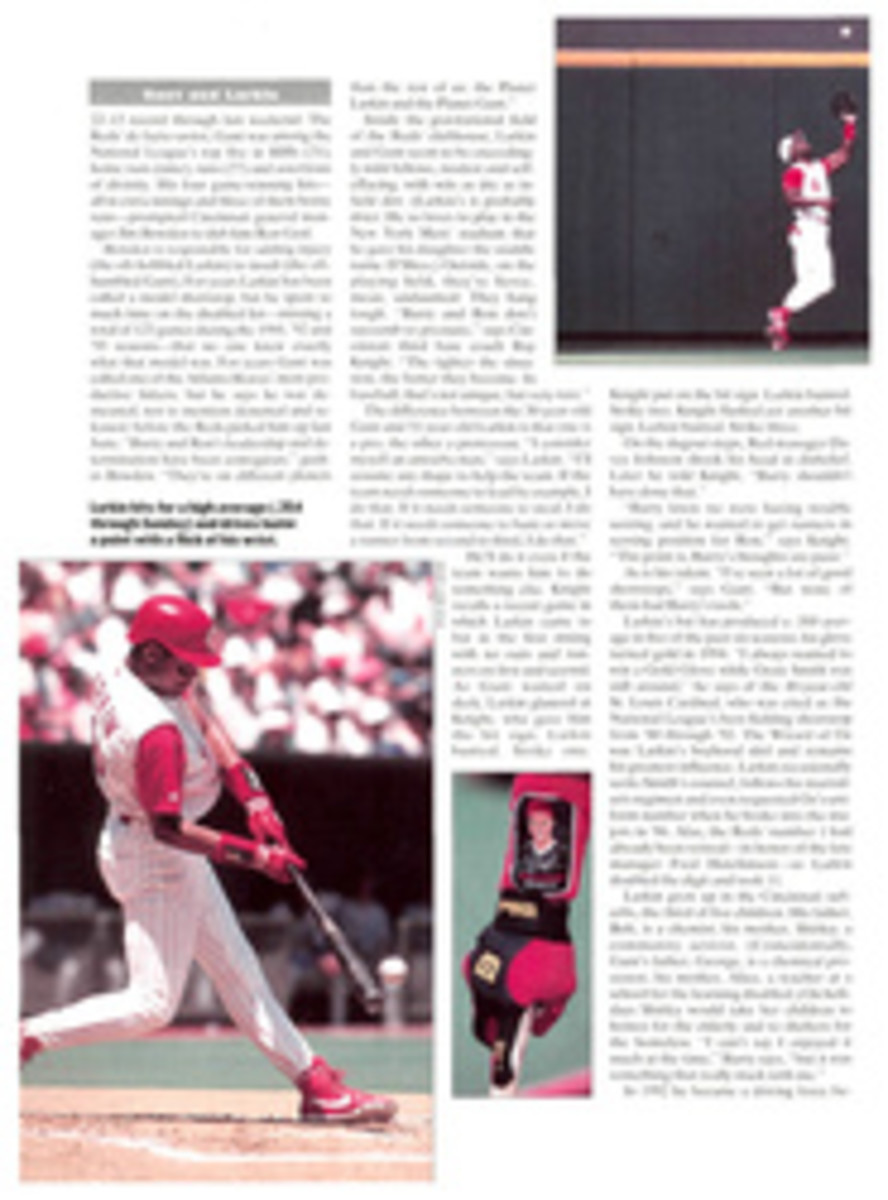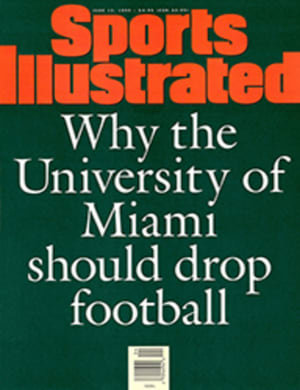
SIGNS OF LIFE? THE PREFONTAINE MEET GAVE A BRIEF SECOND WIND TO A SPORT THAT SEEMS TO BE DYING IN THE U.S.
Small flames flickered in the darkness, dancing on a cold wind
that blew through the University of Oregon's Hayward Field late
last Saturday night. More than 500 people holding candles sat in
the weathered bleachers of the track stadium, remembering Steve
Prefontaine, a native son who died 20 years earlier when he was
the soul of American track and field. There were speeches by
Prefontaine's contemporaries, laughter and tears, and then a long
silence until a young voice shouted from the seats, ``Go, Pre!''
Gently at first and then urgently, the crowd began stamping its
feet, as if Prefontaine were circling the track below, winning one
of the 20 races of more than a mile in length that he ran --
without a defeat -- at Hayward. The stamping continued for nearly
a minute, and then the crowd fell quiet. It was difficult to know
what was taking place: a memorial to Prefontaine on the eve of the
meet that bears his name or a funeral for the sport he cherished.
Track and field comes annually to Eugene for competition and for
excellence. But last weekend it also came for renewal and
survival. It has been a discouraging spring for the sport. The
Bruce Jenner Classic in San Jose was saved only by an infusion of
European money, and the New York Games were attended by fewer than
5,000 people. Mobil's sponsorship of the Grand Prix circuit
reportedly is hanging by a thread. And Sunkist has withdrawn title
sponsorship of its Los Angeles indoor meet, moving indoor track in
the U.S. one step closer to extinction.
``I've never seen the sport lower,'' says Carl Lewis. Michael
Johnson, who beat Lewis easily in the 200 meters in Eugene, says,
``I'm really ready to throw up my arms and say, `This is the
nature of the sport in this country, and that's it.' People just
have too many other things to watch.''
But there is something magical about Hayward Field, a track temple
in the style of European venues where the sport is not just viewed
but worshiped. Sunday's Prefontaine Classic drew a sellout crowd
of 13,665, live network television coverage and the sort of
passion that is missing from nearly every other U.S. meet.
``Hayward Field is a very, very special place,'' says 1992 U.S.
Olympian Annette Peters, who finished second to Laura Mykytok of
Raleigh, N.C., in the women's 3,000.
There was another sign on Sunday that track and field still has
life in the U.S. In the 20 years since Prefontaine's death, the
steepest decline in American track performance has been in
distance running. The U.S. still has superb sprinters (Johnson,
Lewis, Leroy Burrell, Mike Marsh, to name just a few) and jumpers
(Lewis, Mike Powell and Kareem Streete-Thompson) and even a hammer
thrower (Lance Deal) who could win a medal at the world
championships in Goteborg, Sweden, in August. But except for Steve
Scott, whose U.S. record in the mile, 3:47.69, was set in 1982,
and Alberto Salazar, whose best marathons and 10-kms were run from
1980 to '83, there has been no U.S.-born middle-distance or
distance threat in nearly two decades.
But that dry spell may well be ended by the rise of Steve Holman,
Bob Kennedy and Todd Williams. On Sunday these three newcomers
were the centerpieces of the meet, running Prefontaine's events on
Prefontaine's track. First came Holman, a 25-year-old Georgetown
graduate. He ran a 3:50.91 mile last summer and is aiming this
year not only toward the world championships but also toward
breaking Scott's U.S. mile record. Holman ran Sunday's mile
wearing a borrowed singlet, shorts and spikes (his luggage was
lost by an airline). He moved into the lead with about 400 meters
to run and kicked the final lap in less than 56 seconds to win in
3:52.89, the fastest time in the world this year.
As he crossed the line, Holman thrust his right arm into the air,
stopped dead and then played to the crowd, which was completely
out of character. ``Runners are sedate people,'' Holman said
later, ``but people come to see personalities. Hopefully the fans
got their money's worth out of the mile.'' If they didn't get it
from Holman, they surely did from the fact that 12 other runners
broke four minutes.
Scarcely a half hour later came the two-mile, in which Kennedy
and Williams set off in pursuit of Marc Davis's year-old U.S.
best of 8:12.74. Kennedy and Williams are a matched set: Both
are voracious trainers who reject the mediocrity that was so
pervasive among U.S. distance runners in the 1980s and early
'90s. ``I'm not running 120 miles a week and lifting weights to
sit and kick,'' says Williams.
Kennedy, 24, is also willing to push the pace. He ran 13:02.93 in
the 5,000 last summer at the Bislett Games in Oslo, becoming the
ninth-fastest man in history at that distance. This summer he will
chase a medal in Sweden and Sydney Maree's U.S. 5,000 record of
13:01.15. ``I'm more fit than I've ever been in my life,'' says
Kennedy, who lives in Bloomington, Ind.
Williams, 26, suffered a stress fracture in a toe last summer but
recovered to finish ninth in the World Cross-Country Championships
in March. He followed that with a 27:31 in the 10,000 at a meet in
his hometown of Knoxville, Tenn., in April. Among Americans, only
Mark Nenow and Salazar have run that distance faster.
This is what Kennedy and Williams gave Eugene on Sunday: Four laps
of pure, all-out racing, of the type in which Prefontaine and
Frank Shorter might have once engaged. After a rabbit-paced mile
in 4:08, Kennedy assumed the lead and Williams moved to his
shoulder. Twice they traded the lead. For the final 600 meters,
Kennedy fought back Williams to win by inches in 8:14.53.
They embraced and then jogged a lap together. ``We're friends,''
says Kennedy, ``but we were both racing to win, and we wound up
taking each other to a higher level.'' There was one other thing
about the race. It was a sound heard as Kennedy and Williams
ripped through the final four laps, an impassioned clapping that
turned to a throaty roar as they finished. It was the noise of
knowledge and appreciation and history. It was an old sound, like
the eerie foot-stamping of the night before. But it wasn't for a
ghost this time, it was for living people taking up where the
ghost had left off. It was the sound of track and field, breathing
easily for a day.
COLOR PHOTO:PETER READ MILLEROlympic champion Gail Devers skimmed to victory in the 100-meter hurdles in 12.84 seconds.
COLOR PHOTO:MIKE POWELLIn the two-mile, Kennedy (1) and Williams dueled with an abandon that recalled Pre in his prime. [Bob Kennedy and Todd Williams racing]

